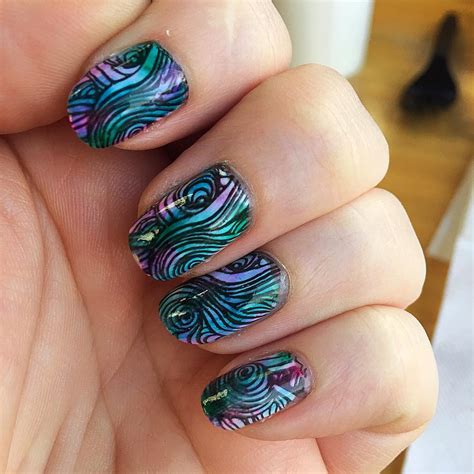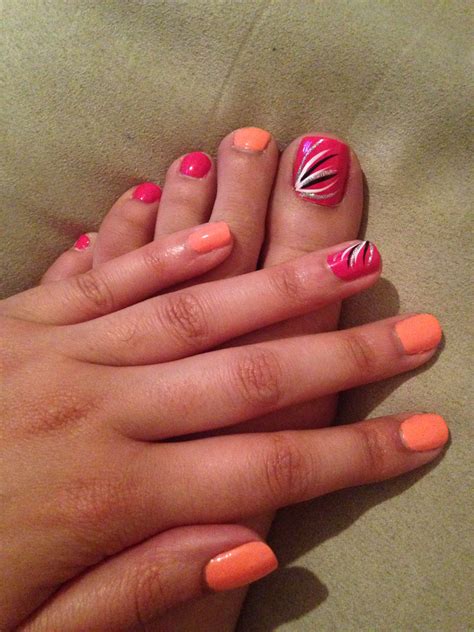Discover the causes, symptoms, diagnosis, and treatment options for nail allergies. Learn how to manage and prevent nail sensitivities effectively.
What are nail allergies?
Contents
Nail allergies refer to a condition where the body’s immune system reacts to certain substances present in nail products. These substances can include chemicals found in nail polish, glue, primer, and acrylic nails. When a person comes into contact with these allergens, the immune system recognizes them as harmful and triggers an allergic reaction.
In some cases, nail sensitivities can also develop, where the body becomes more sensitive to certain nail products over time. This can result in symptoms such as redness, swelling, itching, and even blistering around the nails.
It’s important to note that nail allergies can be different from other types of allergies, such as food or pollen allergies. The symptoms and triggers for nail allergies may vary from person to person, making it essential to understand the specific substances that can cause a reaction.
People who work in professions that involve frequent exposure to nail products, such as manicurists and nail technicians, may be at a higher risk of developing nail allergies due to prolonged and repeated contact with these substances.
Causes of nail sensitivities
Understanding Nail Allergies and Sensitivities
Many people experience sensitivity or allergic reactions to various nail products, which can be attributed to several factors. One of the primary causes of nail sensitivities is the presence of chemicals in nail polishes, acrylic nails, and other nail products. These chemicals, such as formaldehyde, toluene, and dibutyl phthalate, are known to trigger allergic reactions in some individuals.
In addition, frequent or prolonged exposure to these chemicals can also contribute to the development of sensitivities. Another common cause of nail sensitivities is improper nail preparation or application techniques. When nail products are applied incorrectly, they may come into contact with the skin and cause irritation or allergic reactions.
Moreover, individuals with a history of allergies or sensitive skin may be more prone to developing nail sensitivities. Their immune systems may react more strongly to the allergens found in nail products, leading to symptoms such as redness, itching, and swelling.
It’s important to note that nail sensitivities can also be caused by fungal or bacterial infections that develop underneath the nails. These infections can result in inflammation and sensitivity, making it essential to seek proper treatment to alleviate symptoms and prevent further complications.
Overall, understanding the various causes of nail sensitivities can help individuals identify and avoid potential triggers to prevent allergic reactions and maintain the health of their nails and skin.
Common symptoms of nail allergies
Nail allergies can manifest in a variety of ways, and it’s important to recognize the common symptoms so you can seek treatment if necessary. One common symptom is redness and inflammation around the nail bed, which can be painful and uncomfortable. Additionally, individuals with nail allergies may experience itching and a burning sensation around the nails, which can interfere with daily activities and cause distress. Another symptom to be aware of is the development of blisters or bumps on the skin surrounding the nails, as these can be indicative of an allergic reaction. In some cases, the nails themselves may become brittle and prone to breaking, which can be frustrating for those experiencing nail sensitivities. Overall, it’s crucial to pay attention to these symptoms and seek medical advice if you suspect that you may have a nail allergy.
Furthermore, individuals with nail allergies might notice that their nails appear discolored or have unusual markings, which can be alarming and indicate an underlying issue. Yellowing or darkening of the nails, as well as the presence of ridges or lines, can all be signs of nail sensitivities. It’s also important to pay attention to any changes in the texture of the nails, as individuals with nail allergies may notice that their nails become thicker or develop an abnormal texture. These symptoms, while common, can vary in severity and may be accompanied by additional discomfort or pain, so it’s essential to seek medical attention for proper diagnosis and treatment.
In some cases, individuals with nail allergies may also experience swelling and tenderness around the nail bed, which can make everyday tasks such as typing or writing challenging. This swelling can be accompanied by warmth and a pulsating sensation, indicating an inflammatory response. Additionally, some people may develop a rash or hives on the skin near the nails, which can be unsightly and lead to further discomfort. It’s important to note that these symptoms may not always be isolated to the nails themselves, and can affect the surrounding skin as well.
It’s crucial to be mindful of these common symptoms of nail allergies and sensitivities, as they can have a significant impact on an individual’s quality of life. By recognizing these signs, seeking medical advice, and implementing appropriate measures, individuals with nail sensitivities can manage their symptoms effectively and improve their overall well-being.
Diagnosing nail sensitivities
When it comes to diagnosing nail sensitivities, it’s important to pay attention to any unusual reactions or symptoms that occur after exposure to certain nail products or materials. If you notice redness, swelling, itching, or other signs of irritation around your nails, it’s possible that you may have a nail allergy or sensitivity.
It’s also important to consider your nail care routine and any recent changes you may have made. Have you started using a new nail polish, nail hardener, or artificial nails? Have you switched to a different brand of nail products? These changes could be a potential trigger for your nail sensitivities.
When visiting a dermatologist or allergist for diagnosing nail sensitivities, be prepared to provide detailed information about the products and materials you have been in contact with, as well as a history of your symptoms. Your healthcare provider may also perform patch testing to identify specific allergens that could be causing your nail sensitivities.
In some cases, the diagnosing process may involve ruling out other potential causes of nail problems, such as fungal infections or other skin conditions. Your healthcare provider will work with you to determine the most likely cause of your nail sensitivities and develop an appropriate treatment plan.
Managing and treating nail allergies
Nail allergies can be very irritating and uncomfortable to deal with. If you find yourself experiencing symptoms such as redness, swelling, tenderness, or blisters around your nails, it’s important to consider the possibility of a nail allergy. Once you have been diagnosed with a nail allergy, it is crucial to manage and treat the condition effectively to minimize discomfort and prevent any further complications.
One of the most crucial steps in managing and treating nail allergies is to identify and avoid the source of the allergen. This may involve using hypoallergenic nail products, avoiding certain nail polish brands or specific substances, and taking measures to limit exposure to potential irritants or allergens. By eliminating or minimizing contact with the trigger, you can significantly reduce the risk of an allergic reaction and alleviate symptoms.
Additionally, it’s essential to maintain proper nail and hand hygiene to reduce the risk of developing nail allergies. Regularly washing your hands and keeping your nails clean and dry can help prevent the buildup of irritants and allergens that may lead to allergic reactions. Moisturizing your nails and cuticles can also help maintain their health and reduce the risk of irritation and sensitivity.
Seeking medical treatment is another key aspect of managing and treating nail allergies. If you are experiencing persistent or severe symptoms, such as inflammation, pain, or infection, it’s crucial to consult a dermatologist or allergist for professional evaluation and treatment. They can provide specific recommendations, prescribe medications, or offer alternative therapies to alleviate symptoms and manage the underlying allergy more effectively.
Finally, maintaining overall skin health is important in managing and treating nail allergies. Keeping your skin well-hydrated, using gentle skincare products, and protecting your hands and nails from harsh chemicals or environmental irritants can help minimize the risk of developing allergies and sensitivities. By taking a comprehensive approach to skin and nail care, you can effectively manage nail allergies and improve your overall well-being.













